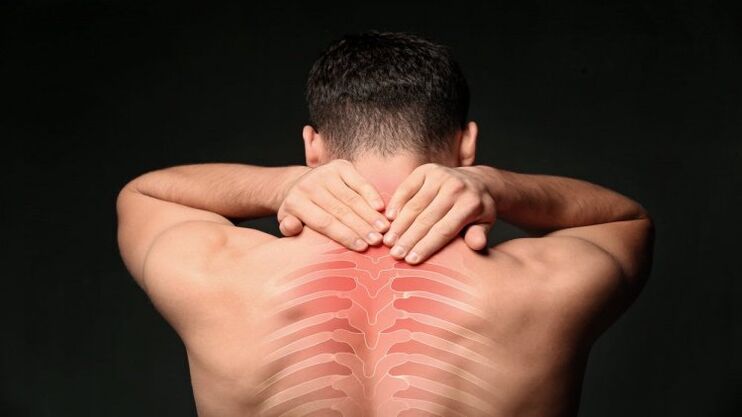Osteochondrosis is a chronically occurring pathological process in which the vertebrae and intervertebral discs between them undergo degenerative-dystrophic changes. Usually, this disease affects the cervical and lumbar spine. The thoracic spine is affected less often, however, this pathology causes certain difficulties in differential diagnosis, since it can be confused with heart, lung or any other disease. In this article, we will look at thoracic osteonecrosis in terms of symptoms and treatment.
Clinical picture in thoracic osteonecrosis

The leading clinical sign of degenerative-dystrophic changes in the thoracic spine is a pain syndrome localized between the shoulder blades, in the chest, along the ribs, etc. v.
Some patients report moderate pain, others report extremely severe pain. The pain syndrome is aggravated by taking deep breaths, turning or tilting the torso, raising the arms, as well as other types of physical activity. Due to the nature of the pain, osteosarcoma can be confused with angina, myocardial infarction, pancreatitis, and other conditions. It is extremely important to conduct a thorough differential diagnosis.
Due to the severe pain, the patient is unable to take a deep breath, resulting in a feeling of shortness of breath. In parallel, sensitization disorders of the upper extremities are often observed in the form of numbness, tingling and more often muscle tension in the back. In some cases, the clinical picture is complemented by disturbances in the digestive system, eg, flatulence, epigastric pain, heartburn, etc. v.
Treatment of osteonecrosis of the thoracic spine
First of all, during the exacerbation of thoracic osteochondrosis, it is advisable to adhere to a bed rest regimen or at least half a bed.
Non-steroidal anti-inflammatory drugs are used to relieve pain.
In 2014, scientists from the National Medical University of Kazakhstan published a paper, the results of which determined the effectiveness of complex treatment of osteonecrosis with the use of muscle relaxants.
As for muscle relaxants, they aim to stop muscle spasms.
The treatment plan necessarily includes vitamin B supplementation, physical therapy procedures. Among the methods of physical therapy can be used electrophoresis, magnetic therapy, electrophoresis, etc. v.
After stopping the acute process, the patient can be prescribed massage courses, therapeutic exercises.
In some cases, surgical intervention can be decided, for example in the case of a herniated disc compressing the spinal cord.

























